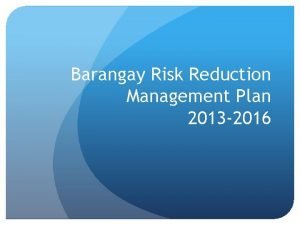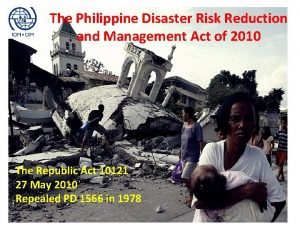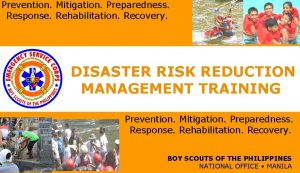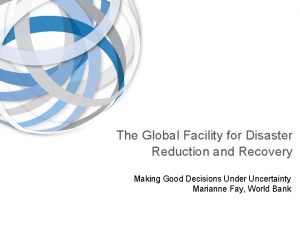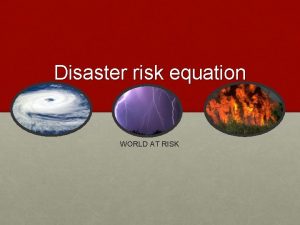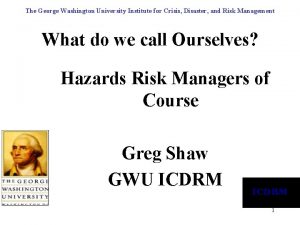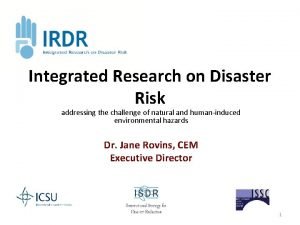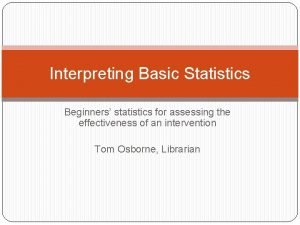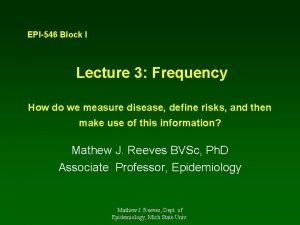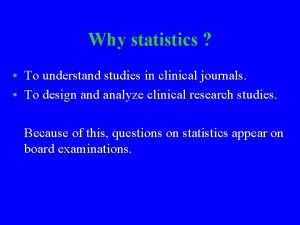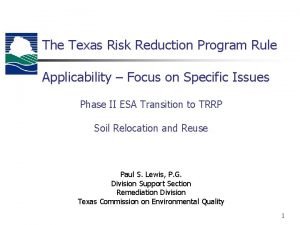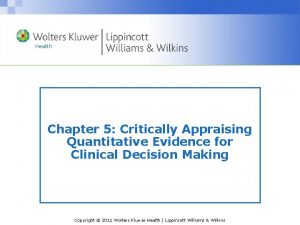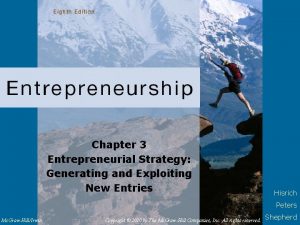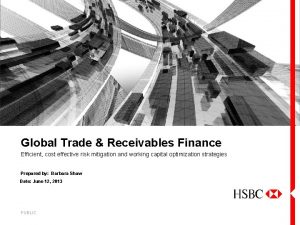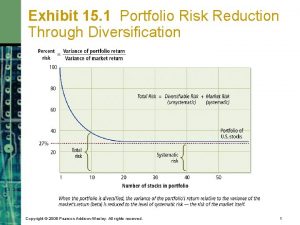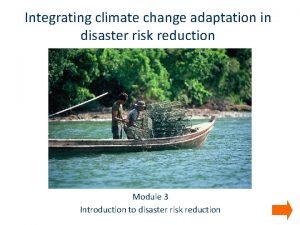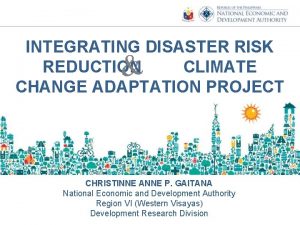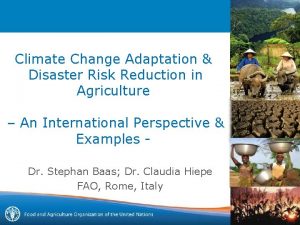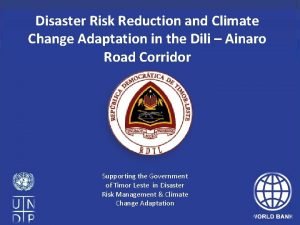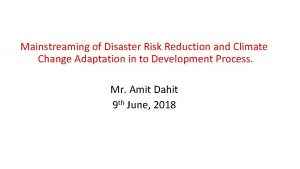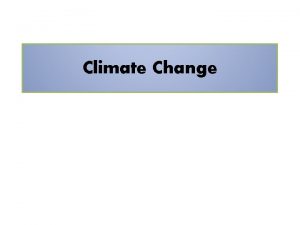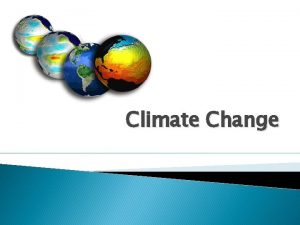1 Integrating Disaster Risk Reduction into Climate Change





















- Slides: 21

1 Integrating Disaster Risk Reduction into Climate Change Adaptation and Water Management, Building bridges between government, science and civic society www. unisdr. org 5 th World Water Forum, Istanbul, 16 -22 March 2009 Mostafa Mohaghegh Head of Regional Office for West Asia and North Africa UNISDR

2 Disasters: a global view • Disasters affected 2. 5 billion people in last decade; with costs of $570 billion. Death toll was 889, 000 people. • Main hazards are climatic - floods, storms and droughts. • Poorest countries are 5 times more affected by disasters and their impacts can exceed GDP of these countries. www. unisdr. org • In the absence of appropriate development plans, vulnerability to natural hazards arises from land degradation, unplanned settlements, lack of awareness, lack of preparedness, poverty.

www. unisdr. org 3

4 www. unisdr. org Average killed per hazard per year without "mega events" Data source: EM-Dat, graphic: ISDR, 2007

5 www. unisdr. org Trends in events versus killed by hazard types Data source: EM-Dat, graphic: ISDR, 2007

6 www. unisdr. org Number of total affected population and total damage in thousands of US$ in Arab Countries due to disasters caused by natural hazards between 1980 and 2008: Disaster Type Droughts Earthquakes Floods Storms (totals) Total Affected 28, 199, 657 1, 342, 296 7, 404, 613 252, 074 37, 198, 640 Economic Loss 900, 000 11, 862, 929 2, 889, 336 4, 149, 854 19, 802, 119

7 Global Trends: Disasters are NOT natural Physical: insufficient land use planning, housing, infrastructure located in hazard-prone areas. . . ﺭ HAZARDS + EXTREME EVENTS Environmental degradation: unsustainable management of ecosystem services, coasts, watersheds, marshlands. . . www. unisdr. org VULNERABILITY Natural hazard X Vulnerability = Disaster Risk

8 Environmental impact in the Arab Region and Disaster Risk Reduction ü Arab region due to its extended geography, social and economic structure deterioration of natural recourses, ü dependency of its countries on recourse that are vulnerable such as agriculture, water resources and fisheries will be one of the most vulnerable regions to climate change impacts. ü The impacts including threats to coastal areas increase in intensity of drought, desertification scarcity of water, and increase in salinity of groundwater. www. unisdr. org ü This results in negative impact on socio-economic development and disturbing sustainable development which is another challenge to Arab States in their effort to achieve its MDGs. ü The negative impacts of climate change on the environment, on economic and agricultural systems, ü vulnerability of people can be reduced through preparedness by managing climate change risk.

9 üThis may be achieved by mitigation measures which entail reducing emission and undertaking adaptation measures to deal with possible hazards. ü According to UN-HABITAT, 18 percent of North African urban dwellers live in low elevation coastal zones with Alexandria, Algiers, Casablanca and Tunis being particularly vulnerable to increase in sea level. www. unisdr. org ü without human intervention to prevent catastrophe, a 50 cm increase is predicted to displace over two million people, destroy 214, 000 jobs and cost over $35 billion in the coastal area between Alexandria and Port-Said. ” ü Several studies on global warming highlighted the serious and potentially catastrophic impacts of climate change on the Nile Delta, the breadbasket of Egypt and the home for almost one third of Egypt’s 80 million people. Not only lives would be lost with rising water levels and increasing salinity in the Delta, but people’s livelihoods will be devastated and ecosystems will be damaged • (The UN-HABITAT report “The State of African Cities 2008”)

10 Disaster risk considerations should be integrated into sustainable development planning üDisasters are not random - but arise from the convergence of hazards and vulnerable conditions. üDisasters not only reveal underlying social, economic, political and environmental problems - but unfortunately contribute to worsening them. www. unisdr. org üDisasters pose serious challenges to development - as they erode hard-earned gains in terms of political, social and educational progress, as well as infrastructure and technological development. üEnvironmental degradation, settlement patterns, livelihood choices and behavior all influence disaster risk - which in turn adversely affects human development and contributes to further environmental degradation. üThe poorest are the most vulnerable to disasters - because they are often pushed to settle on the most marginal lands and have least access to prevention, preparedness and early warning.

11 Climate Change and Disaster Risk Reduction www. unisdr. org üClimate change will generally increase disaster risks; - Increase in extreme weather events - Increase in sea-level rise - Increase in societal vulnerabilities to hazards arising from stresses on water availability, agriculture and degrading ecosystems. üMany disaster risk reduction activities contribute directly to climate change adaptation; - Early warning systems, - Risk assessment ; - Use of sustainable natural resources (as recognized in the Bali Action Plan). üEnvironmental issues need to be integrated into climate change adaptation strategies to ensure that climate change adaptation measures are environmentally sensitive.

12 Hyogo Framework for Action 2005 -2015: Building the resilience of nations and communities to disasters www. unisdr. org Three strategic goals § The integration of disaster risk reduction into sustainable development policies and planning. § The development and strengthening of institutions, mechanisms and capacities to build resilience to hazards. § The systematic incorporation of risk reduction approaches into the implementation of emergency preparedness, response and recovery programmes.

13 Hyogo Framework for Action 2005 -2015: Building the resilience of nations and communities to disasters Five priorities for action 1. Governance: ensure that disaster risk reduction is a national and local priority with strong institutional basis for implementation 2. Risk identification: identify, assess and monitor disaster risks and enhance early warning www. unisdr. org 3. Reducing the underlying risk factors in various sectors (environment, health, construction, etc. ) 4. Knowledge: use knowledge, innovation and education to build a culture of safety and resilience at all levels 5. Strengthen disaster preparedness for effective response Words Into Action: A Guide for Implementing the Hyogo Framework

14 Disaster Risk Reduction and Climate Chanege in the Arab Region The Arab Ministerial Declaration on Climate Change, in its 19 th session 5 -6 December 2007, to: www. unisdr. org “include appropriate mechanisms for risks insurance, improvement in the management efficiency of natural resources through the use of appropriate techniques and advanced monitoring, control and early warning systems, as well as adequate preparedness to confront disasters caused by climate change”.

15 The 20 th Session of the Council of Arab Ministers Responsible for Environment (CAMRE) , Cairo, 21 -22 December 2008 adopted a resolution which stresses on: www. unisdr. org “ 1) the implementation of the Hyogo Framework for Action as a permanent item in the agenda of the Joint Committee for Environment and Development in the Arab region and in the Council of Arab Ministers responsible for Environment and its Executive Bureau. 2) to invite the Arab States for fulfilling their obligations toward the implementation of the Hyogo Framework for Action including establishment of National Platforms or Committees for Disaster Risk Reduction or other multi-stakeholder coordination mechanisms to strengthen disaster risk reduction in various levels

16 Building bridges between government, science and civic society www. unisdr. org • Disaster Risk Reduction increasingly recognized at governmental and nongovernmental levels in the recent years as an important element for the success of development programmes and climate change adaptation measures in the region. Several governments like Egypt, Yemen, Jordan, Morocco, Bahrain and some other countries initiated development of institutional and technical processes for comprehensive risk reduction impact. • More academia and scientific centres in the region engaged in linking risk reduction concept and measures in the academic and scientific programmes. Arab Academy for Science, Technology and Maritime Transport (AASTMT) , based in Alexandria began to systematically integrate disaster risk reduction in its various academic disciplines and training and research projects such as on climate change adaptation, water management, coastal zones risk mapping, etc. The Arab Academy has also integrated disaster risk reduction in its research activities on the Nile Delta and sea level rise risks in Alexandria.

17 • The civic society in the region has also began integrating disaster risk reduction in their various programmes on disaster management, environment and development. • The Arab Network for Environment and Development (RAED) as a community based regional nongovernmental network initiated significant activities to promote the concept and practices of disaster risk reduction at community and civil society levels. www. unisdr. org • RAED has been very successful in bringing the governmental and academic and public sectors and actors together on a number of occasions related to environment and climate change adaptation. • In regard to coordinated and holistic cooperation between government, science and civil society, there are several good examples such the cooperation on Nile Delta between the Government of Egypt, AASTMT and some civil society institutions.

18 Some success factors: • Strong institutional and technical capacities of the academic centres and civil society actors with regard to environmental risk reduction and their recognition at national level. • A good shared understanding of the existing rules and adopted decisions by Academia and civil society www. unisdr. org • The role of science and technology in implementation of various national and local regulations and rules is better recognized • A clear position and mandate of the governmental sectors in particular at local and community levels for cooperation with scientific and civic actors

19 • Civil society can bring the indigenous knowledge to build on existing capacities • in terms of advocacy, civil society has more capability and chance to reach out to all sectors of the communities • The concept of community based action is not limited to civil society actors but should include also the local government www. unisdr. org • Strong public and media awareness on the necessary for such multilateral cooperation • The role of regional organizations such as the League of Arab States and their multilateral support for national initiatives

20 Some challenges: • Lack of adequate clarity on concept and definitions of risk reduction as well as working language for multilateral cooperation • Need for more pro-active role and engagement of the central governments in the multi-lateral cooperation at local level. • Lack of long term and strategic shared vision at national level www. unisdr. org • Inadequacy of resources for more sustainable impact of cooperation • Need for more science-based data and methodology on disaster risk reduction integration • Need for more multi-hazard approaches and mechanisms • Individual approach in dealing with multi-stakeholder issues like disaster risk reduction affects the results

21 Thank you United Nations, secretariat of the International Strategy for Disaster Reduction www. unisdr. org Arab Academy for Science, Technology and Maritime Transport Higher Education Complex Bldg. Block 1167 Off Mosheer Ahmed Ismaeel Street, 3 rd floor P. O. Box 20231 Masaken Sheraton Cairo , Arab Republic of Egypt info@unisdr-wana. org Tel: +(2 02) 22665602/3/4 Fax: +(20 2) 22665642
 Climate change 2014 mitigation of climate change
Climate change 2014 mitigation of climate change Bdrrm plan message
Bdrrm plan message What is ndrrm
What is ndrrm National disaster risk reduction and management framework
National disaster risk reduction and management framework Risk mitigation avoidance
Risk mitigation avoidance Quote integration examples
Quote integration examples Paragraph
Paragraph Credit risk market risk operational risk
Credit risk market risk operational risk Global facility for disaster reduction and recovery
Global facility for disaster reduction and recovery Equation of disaster risk
Equation of disaster risk Institute for crisis disaster and risk management
Institute for crisis disaster and risk management Integrated research on disaster risk
Integrated research on disaster risk Wsjf alternatives
Wsjf alternatives Relative risk reduction
Relative risk reduction Number need to treat
Number need to treat Risk reduction strategies for new entry exploitation
Risk reduction strategies for new entry exploitation Relative risk reduction formula
Relative risk reduction formula Trrp-2
Trrp-2 Absolute risk formula
Absolute risk formula Risk reduction strategies for new entry exploitation
Risk reduction strategies for new entry exploitation Global trade and receivable finances
Global trade and receivable finances Risk reduction through diversification
Risk reduction through diversification

